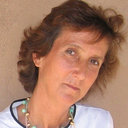Wegener granulomatosis in a child: cutaneous findings as the presenting signs.
Maneno muhimu
Kikemikali
Wegener granulomatosis (WG) is a systemic disease that is particularly unusual in children. A limited form has been described without renal involvement. We report a 14-year-old girl in whom the disease started with acneiform nodular and papular lesions on the forehead. Later necrotic ulcers developed on her forehead, arms, and buttocks. The cutaneous lesions were associated with upper and lower respiratory tract involvement, low-grade fever and arthralgias. Subsequently clinical and laboratory evaluations (increased ESR; leukocytosis and presence of serum IgG antibodies cANCA = 1:160), with chest roentgenograms revealing pulmonary densities and parenchymal infiltration, suggested the diagnosis of WG. The histologic findings of a cutaneous biopsy specimen were ulceration of the epidermis with diffuse neutrophilic inflammatory infiltrate and a late-stage small vessel vasculitis in the dermis. Histopathology of the nasal mucosa was characterized by a granulomatous process with a dense lymphohistiocytic infiltrate with few giant cells, a finding that confirmed the diagnosis of WG. No renal involvement was present. One month of cyclophosphamide (125 mg/day) and prednisone (70 mg/day) therapy markedly improved the patient's clinical condition. At present, 1 year later, she is free from any signs of the disease. According to the literature, the frequency of cutaneous lesions in WG ranges from 16% to 46%. They are the presenting sign only in 6% of patients. Cutaneous lesions are even more uncommon in children. In particular, an "acneiform" presentation is a rare finding in WG.



